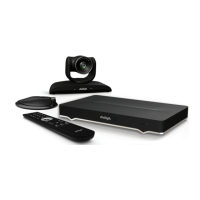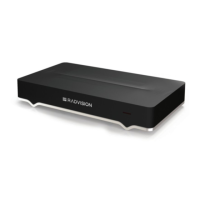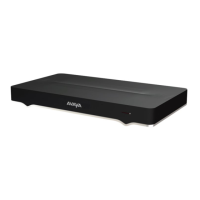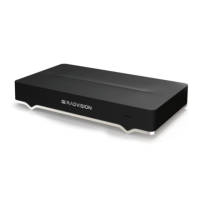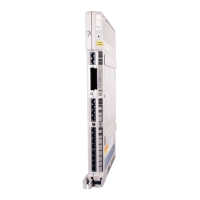•
The audio input port is for:
- The analog One-way Microphone Pod or any other analog microphone with a 3.5mm jack.
- A third-party digital microphone with a mini-TOSlink connector.
- Audio mixers like those from Clear One. An audio mixer connects multiple microphones (or
other audio inputs) to generate a single audio stream.
- A computer audio-out connection or line audio connection.
Table 7: Types of microphones on page 75 describes the most common types of microphones
used with an Avaya Room System XT Series.
Table 7: Types of microphones
Type of
Microphon
e
Optimal Room
Size
Advantages Disadvantages Microphone
Specifications
Typically
Used With
USB
Camera
with Built-in
Microphon
e, or USB
headset
Personal
endpoint for
close proximity
to speaker
Cost-effective.
Frees the audio input
port for computer
audio input.
Short range,
suitable for a single
participant only.
Digital audio
Supported
headsets:
Plantronics
Voyager Pro UC
Wireless
Plantronics Savi
W440
Jabra Pro 9450
Duo
Avaya
XTE240
One-way
Microphon
e Pod
Small meeting
rooms (up to
4x4m)
Multiple participants
can be positioned up
to three meters away
on one side of the
mic.
Cost-effective
Captures more
background noise
than the three-way
Microphone Pod
Captures audio only
from one side
When connected,
you cannot transmit
PC audio
Analog audio
One side (180º
range)
3 meters (about
10 feet)
Avaya
XT4000
Series
Table continues…
Connecting Microphones and Speakers to the XT Series
August 2020 Deployment Guide for Avaya XT Series 75
Comments on this document? infodev@avaya.com

